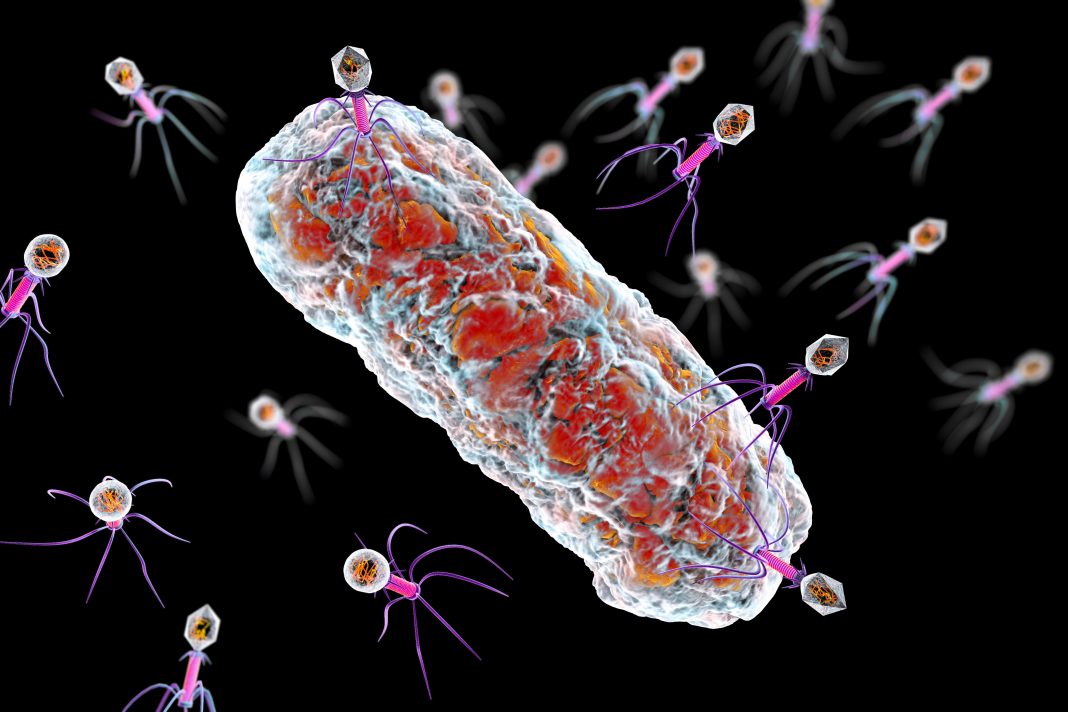Engineering bacterial genomes with beneficial traits is the goal of many synthetic biology researchers. Now, work from the lab of George Church, PhD, at Harvard Medical School (HMS), reports the construction of an Escherichia coli strain that is not only immune to viral infections but has reduced potential of escaping into the wild.
The work may reduce the threat of viral contamination when harnessing bacteria to produce medicines such as insulin as well as other useful substances, such as biofuels. Currently, viruses that infect vats of bacteria can halt production, compromise drug safety, and cost millions of dollars.
This research is published in Nature, in the paper, “A swapped genetic code prevents viral infections and gene transfer.”
“We believe we have developed the first technology to design an organism that can’t be infected by any known virus,” said Akos Nyerges, PhD, research fellow in the Church lab. “We can’t say it’s fully virus-resistant, but so far, based on extensive laboratory experiments and computational analysis, we haven’t found a virus that can break it.”
In addition, this work also provides the first built-in safety measure that prevents modified genetic material from being incorporated into natural cells, he said.
The findings build on earlier efforts, published last fall by researchers at the University of Cambridge, to achieve a safe, virus-resistant bacterium. The method used at that time involved genetically reprogramming E. coli to make their proteins from 61 sets of codons, instead of the naturally occurring 64.
The hypothesis was that viruses wouldn’t be able to hijack the cells because they couldn’t replicate without the missing codons.
The HMS team realized that deleting codons wasn’t enough, because some viruses were bringing in their own viral transfer RNAs (tRNAs) to get around the missing codons. They developed a way to change what those codons tell an organism to make—something scientists hadn’t done to this extent in living cells.
The Cambridge team had deleted the codons TCG along with TCA, which also calls for serine. The team had also removed the corresponding tRNAs. The HMS team now added new tRNAs in their place which added leucine instead of serine for a TCG or TCA.
When an invading virus injects its own genetic code with TCG and TCA, the viral code is mistranslated.
Viruses, however, also come equipped with their own tRNAs which can still accurately turn TCG and TCA into serine. But Nyerges and colleagues provided evidence that the tRNAs they introduced can overpower their viral counterparts.
“It was very challenging and a big achievement to demonstrate that it’s possible to swap an organism’s genetic code,” said Nyerges, “and that it only works if we do it this way.”
Although the work may have rendered a bacterium immune to all viruses, there is still a chance something will appear that can break the protection, the authors said. However, overcoming the swapped codons would require a virus to develop dozens of specific mutations at the same time. “That’s very, very unlikely for natural evolution,” Nyerges said.
The work incorporates two separate safeguards. The first protects against horizontal gene transfer. Nyerges and colleagues made substitutions throughout genes in the modified E. coli cells so that all codons that call for leucine got replaced with TCG or TCA—the codons that in an unmodified organism would call for serine. The bacteria still correctly made leucine in those places because of their tRNAs.
If another organism were to incorporate any of the modified snippets into its own genome, though, the organism’s natural tRNAs would interpret TCG and TCA as serine and end up with junk proteins that don’t convey any evolutionary advantage.
“The genetic information will be gibberish,” said Nyerges.
For the second fail-safe, the team designed the bacteria themselves to be unable to live outside a controlled environment by making the E. coli reliant on a lab-made amino acid that doesn’t exist in the wild.
Nyerges looks forward to exploring codon reprogramming as a tool for coaxing bacteria to produce medically useful synthetic materials that would otherwise require expensive chemistry.



